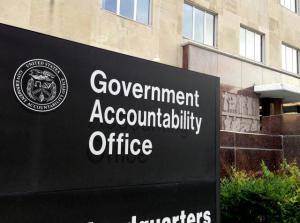

Public-private leasing and compiling a comprehensive database of government facilities are part of a handful of bills aimed at managing federal real property.
The 115th Congress started two months ago, and lawmakers are already turning their attention to the longtime issue of federal real property management.
Five bills have been proposed that directly and indirectly address the government’s real property portfolio, which the Government Accountability Office has named in its High-Risk List since 2003.
Proposed by Rep. Michelle Lujan Grisham (D-N.M.) the bill would create pilot programs in the Energy and Agriculture departments, and the General Services Administration, to help them lease excess or underutilized properties for private sector use, and “to develop, rehabilitate, or renovate facilities on such leased properties for the benefit of the covered agency, including monetary benefits such as lease revenues and non-monetary benefits such as avoided operations and maintenance costs.”
Under the bill, the three large agencies are directed to identify 5-10 properties that could be leased. Agencies would need to come up with a pilot plan within a year from the bill’s passage, according to the legislation’s text, and the GAO would be required to submit reports at five years and 10 years after the law’s enactment.
According to the High-Risk List report, the government’s real property portfolio includes about 273,000 buildings that are leased or owned, and cost billions of dollars to operate and maintain.
Lujan Grisham also proposed a bill that would require agencies to notify the public and collect public comments before relocating an office that “has regular contact with the public.”
“Before an executive agency provides notice of the relocation of an office … the agency shall determine if the agency expects the relocation to impact the ability of the office’s clientele to access services provided by the office,” the bill’s text stated.
The bill applies to relocations proposed by the agency and reassignment of an agency’s office space by GSA.
If enough public interest is generated from the notice, agencies are directed to develop a plan to address the impact of the relocation. A time frame for the plan and the notification is not included in the draft of the bill, but the director of the Office of Management and Budget is directed to issue guidance within six months on the meaning of “regular contact with the public” and “”substantial public interest.”
One of the problems lawmakers must consider when addressing the issue of real property, is what happens when a large federal building or facility is suddenly vacated. Local economies can be impacted when there are no longer hundreds or thousands of employees living and working in an area, not to mention the question of what will replace the federal office once workers leave.
While the Making Opportunities for Broadband Investment and Limiting Excessive and Needless Obstacles to Wireless Act, highlights “needless obstacles” in the way of promoting more development of wireless technology, another hurdle that will need to be overcome is the bill’s requirement that the Office of Science and Technology Policy create a single database of federal real property that is capable of supporting broadband infrastructure.
“The OSTP must make the database available to: (1) entities that construct or operate communications facility installations or provide communications service, and (2) state and local governments so that they may provide information regarding state and local properties to include in the database,” stated the bill, which was proposed by Sen. John Thune (R-S.D.)
That could be difficult, since the federal government has a hard enough time keeping track of its real property portfolio.
GAO highlighted data reliability in the Federal Real Property Profile (FRPP) as a problem that still needs to be addressed.
“Our review found that some of the agencies estimated, rather than determined, actual operating costs for each building, as these agencies do not maintain data on costs for specific buildings,” GAO reported. “As a result, standardizing data has been challenging since agencies have applied different approaches to collecting data that align closely with their mission but that in some cases are inconsistent with existing GSA guidance.”
Similar to requirements of the MOBILE NOW act, the bill proposed by Rep. Jared Huffman (D-Calif.) would require compiling an inventory of federal real property “on which a broadband facility could be constructed.”
The inventory must be completed within a year of the bill’s enactment, and be made available to the public.
GSA in January 2016 launched an updated version of the Real Property Management Tool, which allows agencies to view leases and occupancy agreements, rent per square foot, operating and maintenance costs, and compare information on an agency or government-wide level.
The department also last summer stood up an Asset Consolidation Tool, which lets agencies see federal real estate in areas in certain geographic locations, which can help with consolidation efforts.
Though not specifically related to real property management, Sen. Sherrod Brown’s (D-Ohio) bill requires the use of American made materials for federal public works and infrastructure projects — including federal buildings and real property.
“American tax dollars should go toward American-made products that support American jobs. Period,” Brown said in a Jan. 19 statement.
Copyright © 2025 Federal News Network. All rights reserved. This website is not intended for users located within the European Economic Area.



